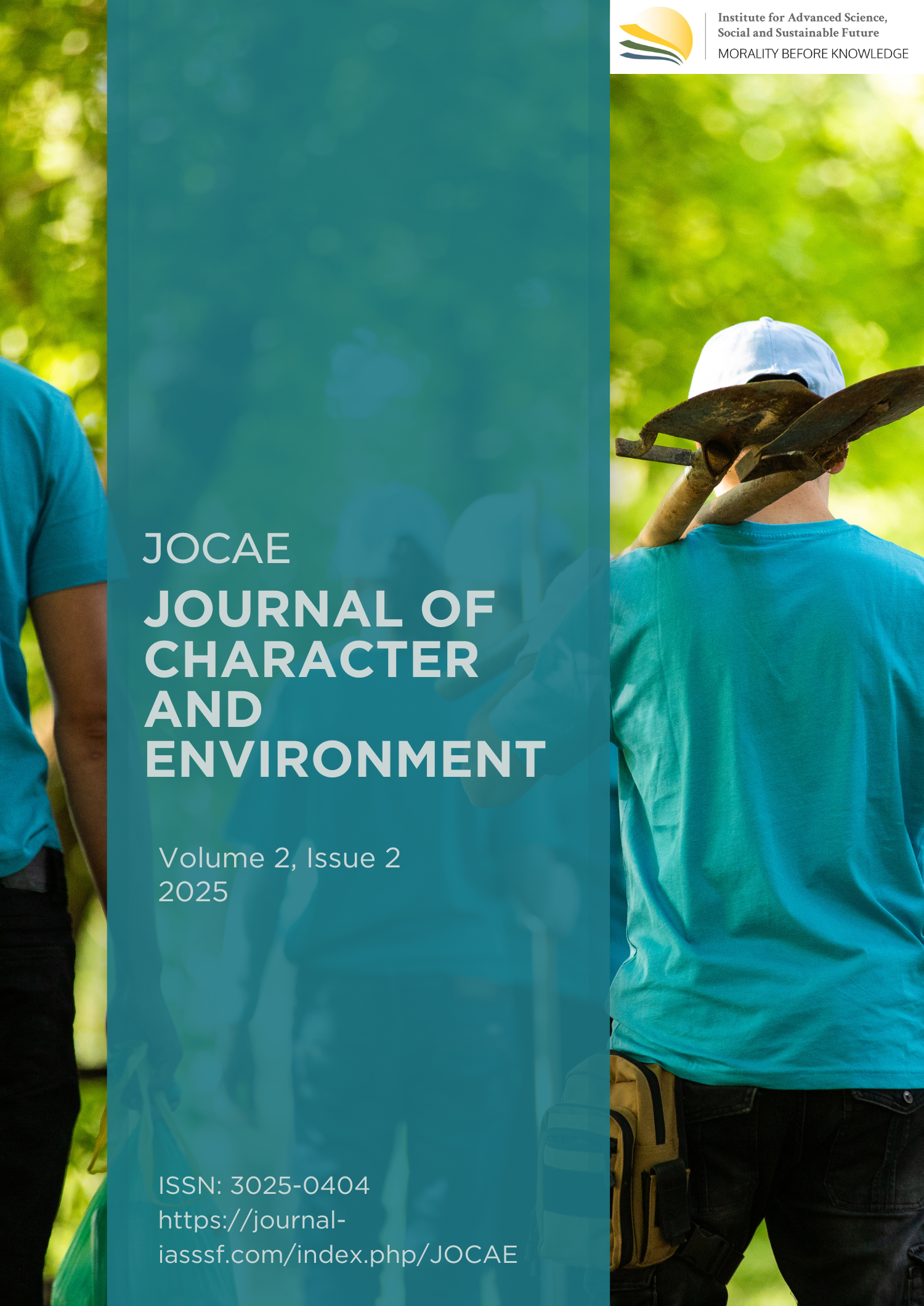Driving factors of innovation: Dimensions of open culture and conscious innovation management in the environmental context
DOI:
https://doi.org/10.61511/jocae.v2i2.2025.1215Keywords:
innovation management, cultural openness, sustainable developmentAbstract
Background: Innovation is crucial for advancing businesses, organizations, and countries, especially amid rapid environmental changes and technological advancements. Universities, as key sources of innovation, must shift to include societal contributions. Despite progress, challenges in commercialization hinder the effective translation of research into marketable products. This study explores the driving factors of innovation at Universitas Indonesia, focusing on open culture and conscious innovation management in an environmental context. Methods: This study utilizes an embedded mixed-methods design, primarily focusing on quantitative research to analyze driving factors of innovation at Universitas Indonesia, employing descriptive analysis through SPSS software for data interpretation. Findings: This section analyzes the driving factors of the innovation process at the Universitas Indonesia, focusing on respondents' perceptions of collaboration, governance, communication, and financial motivation, highlighting areas for improvement. UI demonstrates high cooperation with the business sector but requires more dynamic regulations for effective collaboration. The Dimension of Conscious Innovation Management at UI demonstrates professionalism in innovation management; however, there are still challenges related to program regulations. Conclusion: Universitas Indonesia should enhance collaboration, establish structured remuneration, and allow flexible SOPs to foster sustainable innovation. Novelty/Originality of this article: This study uniquely investigates the interplay of cultural openness and conscious innovation management at Universitas Indonesia, offering practical recommendations to enhance commercialization and sustainability in the university's innovation processes.
References
Baporikar, N. (2015). Drivers of innovation. In Knowledge Management for Competitive Advantage During Economic Crisis (pp. 250-270). IGI Global. https://doi.org/10.4018/978-1-4666-6457-9.ch014
Betaraya, D. M., Nasim, S., & Mukhopadhyay, J. (2018). Subsidiary innovation in a developing economy: Towards a comprehensive model and directions for future research. FIIB Business Review, 7(2), 109-125. https://doi.org/10.1177/2319714518788387
Bhuiyan, N. (2011). A framework for successful new product development. Journal of Industrial Engineering and Management (JIEM), 4(4), 746-770. https://doi.org/10.3926/jiem.334
Brennan, J., Broek, S., Durazzi, N., Kamphuis, B., Ranga, M., & Ryan, S. (2014). Study on innovation in higher education. Publications Office of the European Union, Luxembourg. http://eprints.lse.ac.uk/55819/
Cai, Y., Ma, J., & Chen, Q. (2020). Higher education in innovation ecosystems. Sustainability, 12(11), 4376. https://doi.org/10.3390/su12114376
Compagnucci, L., & Spigarelli, F. (2020). The Third Mission of the university: A systematic literature review on potentials and constraints. Technological Forecasting and Social Change, 161, 120284. https://doi.org/10.1016/j.techfore.2020.120284
Creswell, J. W., &, Clark, V. L. P. (2010). Designing and Conducting Mixed Methods Research. Sage Publications, Inc.
Creswell, J. W., & Creswell, J. D. (2018). Reseach Design: Qualitative, Quantitative, and Mixed Methods. SAGE Publications.
Damanpour, F. (2018). Organizational innovation: A meta-analysis of effects of determinants and moderators. In Organizational innovation (pp. 127-162). Routledge.
Damanpour, F. (2020). Organizational innovation: Theory, research, and direction. Edward Elgar Publishing.
Desai, A. (2016, April 20). Innovation and the World Bank. World Bank. https://blogs.worldbank.org/voices/innovation-and-world-bank
Dewar, R. D., & Dutton, J. E. (1986). The adoption of radical and incremental innovations: An empirical analysis. Management science, 32(11), 1422-1433. https://doi.org/10.1287/mnsc.32.11.1422
Diaz-Fernandez, M., Bornay-Barrachina, M., & Lopez-Cabrales, A. (2015, April). Innovation and firm performance: the role of human resource management practices. Evidence-based HRM: A global forum for empirical scholarship, 3(1), 64-80. https://doi.org/10.1108/EBHRM-10-2012-0012
Etzkowitz, H. (2003). Innovation in innovation: The triple helix of university-industry-government relations. Social science information, 42(3), 293-337. https://doi.org/10.1177/05390184030423002
Etzkowitz, H., & Leydesdorff, L. (1995). The Triple Helix-University-Industry-Government relations: A laboratory for knowledge based economic development. EASST review, 14(1), 14-19. https://ssrn.com/abstract=2480085
Evan, W. (1966). Organizational lag. Human organization, 25(1), 51-53. https://doi.org/10.17730/humo.25.1.v7354t3822136580
Exposito, A., & Sanchis-Llopis, J. A. (2018). Innovation and business performance for Spanish SMEs: New evidence from a multi-dimensional approach. International Small Business Journal, 36(8), 911-931. https://doi.org/10.1177/0266242618782596
FEB UI. (2020, Oktober 31). Tantangan Perguruan Tinggi di 2021 yang Penuh dengan Ketidakpastian. https://feb.ui.ac.id/2020/10/31/tantangan-perguruan-tinggi-di-2021-yang-penuh-dengan-ketidakpastian/
Garrison, D. R., & Kanuka, H. (2004). Blended learning: Uncovering its transformative potential in higher education. The internet and higher education, 7(2), 95-105. https://doi.org/10.1016/j.iheduc.2004.02.001
Guerrero, M., & Urbano, D. (2011). The creation and development of entrepreneurial universities in Spain: An institutional approach. Nova Science Publishers, Inc.
Hanaysha, J. R., Al-Shaikh, M. E., Joghee, S., & Alzoubi, H. M. (2022). Impact of innovation capabilities on business sustainability in small and medium enterprises. FIIB Business Review, 11(1), 67-78. https://doi.org/10.1177/23197145211042232
Hoff, K., Ellis, D., & Leopkey, B. (2023). Innovation drivers, barriers, and strategies of organizing committees for the Olympic games: an embedded single-case study approach. European Sport Management Quarterly, 24(4), 811-833. https://doi.org/10.1080/16184742.2023.2195871
Knight, K. E. (1967). A descriptive model of the intra-firm innovation process. The journal of business, 40(4), 478-496. https://www.jstor.org/stable/2351630
Lašáková, A., Bajzíková, Ľ., & Dedze, I. (2017). Barriers and drivers of innovation in higher education: Case study-based evidence across ten European universities. International Journal of Educational Development, 55, 69-79. https://doi.org/10.1016/j.ijedudev.2017.06.002
Lichtenthaler, U. (2016). Toward an innovation-based perspective on company performance. Management Decision, 54(1), 66-87. https://doi.org/10.1108/MD-05-2015-0161
Luecke, R., & Katz, R. (2003). Managing Creativity and Innovation. Harvard Business School Press.
Neuman, W. L. (2014). Social Research Methods: Qualitative and quantitative approaches. Pearson.
Research and Innovation Division. (2020). Roadmap Riset dan Inovasi Universitas Indonesia tahun 2020-2024. Universitas Indonesia.
Roxzna, A., & Viorel, C. (2018, June). Product Innovation: A Theoretical Framework of the Concept. In Proceeding Paper in International Conference on Economics and Administration (pp. 81-90). filodirittoeditore.com
Schumpeter, J. A. (1934). The Theory of Economic Development: An Inquiry into Profits, Capital, Credit, Interest, and the Business Cycle. Harvard University Press.
Scimago Institutions Rangkings. (2023). Scimago Institutions Rangkings. SCImago Lab.
Sutarno. (2012). Serba-Serbi Manajemen Bisnis. Graha Ilmu.
Zlatanović, D., Nikolić, J., Potočan, V., & Erić Nielsen, J. (2023). What drives innovativeness in higher education? Evidence from two emerging markets. Kybernetes, 53(12), 5402-5420. https://doi.org/10.1108/K-01-2023-0127
Downloads
Published
How to Cite
Issue
Section
Citation Check
License
Copyright (c) 2025 Verens Elvira, Retno Kusumastuti

This work is licensed under a Creative Commons Attribution 4.0 International License.















